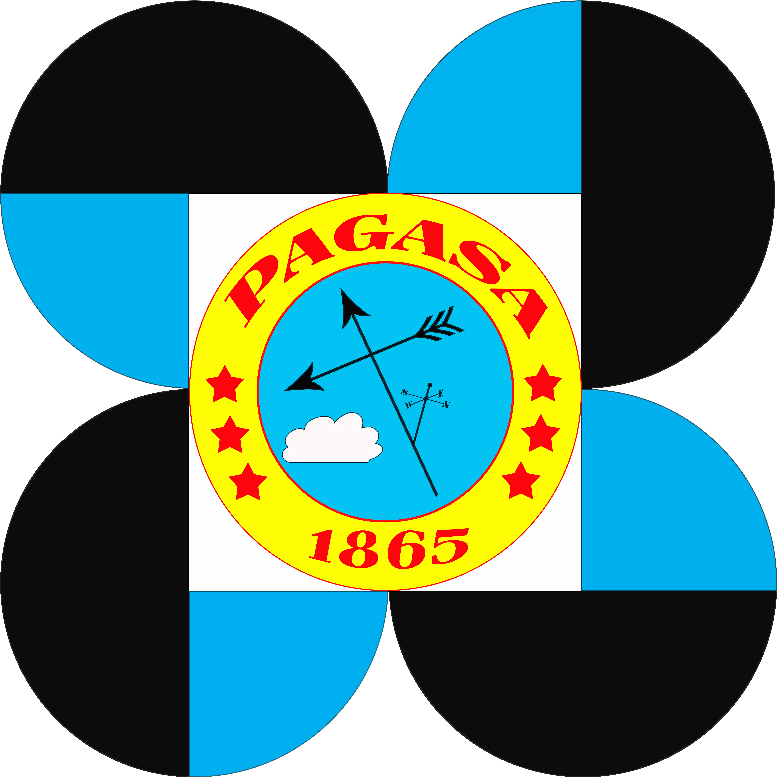| Today until tomorrow (27-28 June): the Southwest Monsoon will bring cloudy skies with scattered rainshowers and thunderstorms over Metro Manila, Visayas, MIMAROPA, Pangasinan, Zambales, Bataan, Tarlac, Pampanga, Bulacan, Cavite, and Batangas. The rest of the country will experience generally fair weather conditions, except for isolated rainshowers or thunderstorms. |
Issued at: Friday, 27 June 2025 4:00 PM
Valid until: Monday, 30 June 2025 7:00 AM
| Forecast Area | Temperature | Relative Humidity | Leaf Wetness (HRS) | |
|---|---|---|---|---|
| Lowland | Upland | |||
| LUZON | 22 – 35 | 14 – 32 | 65 - 98 | 4 – 8 |
| VISAYAS | 24 – 34 | 22 – 32 | 55 – 96 | 4 – 8 |
| MINDANAO | 23 – 34 | 21 – 32 | 60 - 96 | 4 – 8 |
Wet
Ilocos Region, Basco, Cordillera Administrative Region, Aurora, Bataan, Bulacan, Tarlac, Zambales, Quezon, Mindoro Provinces, Northern Palawan, Albay, Catanduanes, Western Visayas, Siquijor, Negros Oriental, Eastern Visayas, Zamboanga del Norte, Northern Mindanao, Davao del Norte, Surigao del Sur, and BARMM
Moist
Itbayat, Calayan, Nueva Ecija, Rizal, Laguna, Cavite, Rest of Palawan Romblon, Camarines Norte, Masbate, Sorsogon, rest of Central Visayas, Southern Leyte, Zamboanga del Sur, Davao del Sur, and Surigao del Norte
Dry
Rest of the country
ENSO ALERT SYSTEM STATUS
(updated: 25 June 2025)
MONTHLY CLIMATE ASSESSMENT AND OUTLOOK INACTIVE
https://bagong.pagasa.dost.gov.ph/climate/elnino-la-nina/monitoring
Plan crop rotation schedules to improve soil health and reduce pest and disease buildup. Diversify crop choices to include short-duration or resilient varieties that can adjust to uncertain weather or market conditions. Identify potential markets or buyers early and establish agreements or linkages to ensure post-harvest income flow. Coordinate with agricultural offices or agencies (e.g., DA, DOST-PAGASA) for training schedules, technical support, and forecast updates.
AREAS AFFECTED BY THE WEATHER SYSTEMS
SOUTHWEST MONSOON, LPA, THUNDERSTORMS AND MODERATE TO HEAVY RAINS
- Monitor weather forecasts and advisories regularly to adjust planting, irrigation, and harvest schedules.
- Suspend pesticide application if heavy rains or strong winds are forecasted to prevent runoff and ineffective spraying.
- Apply fertilizer based on crop growth stage and current soil condisstions—avoid over-application, especially before expected rainfall.
- Use mulch around plants to retain moisture, suppress weeds, and regulate soil temperature.
- Introduce or conserve beneficial insects (e.g., ladybugs, parasitoids) to help control pests naturally.
- Inspect and maintain tools and machinery regularly to avoid breakdowns during peak field operations.
- Use clean sacks, crates, or containers for harvesting and transport to reduce contamination
